Progress and Challenges in Transfer of Large-Area Graphene Films
- PMID: 27812479
- PMCID: PMC5067701
- DOI: 10.1002/advs.201500343
Progress and Challenges in Transfer of Large-Area Graphene Films
Abstract
Graphene, the thinnest, strongest, and stiffest material with exceptional thermal conductivity and electron mobility, has increasingly received world-wide attention in the past few years. These unique properties may lead to novel or improved technologies to address the pressing global challenges in many applications including transparent conducting electrodes, field effect transistors, flexible touch screen, single-molecule gas detection, desalination, DNA sequencing, osmotic energy production, etc. To realize these applications, it is necessary to transfer graphene films from growth substrate to target substrate with large-area, clean, and low defect surface, which are crucial to the performances of large-area graphene devices. This critical review assesses the recent development in transferring large-area graphene grown on Fe, Ru, Co, Ir, Ni, Pt, Au, Cu, and some nonmetal substrates by using various synthesized methods. Among them, the transfers of the most attention kinds of graphene synthesized on Cu and SiC substrates are discussed emphatically. The advances and the main challenges of each wet and dry transfer method for obtaining the transferred graphene film with large-area, clean, and low defect surface are also reviewed. Finally, the article concludes the most promising methods and the further prospects of graphene transfer.
Keywords: challenges; dry transfer methods; graphene films; promising methods; wet transfer methods.
Figures

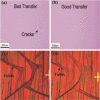
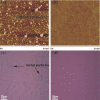


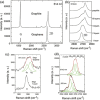

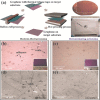
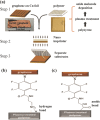


References
-
- Novoselov K. S., Geim A. K., Morozov S. V., Jiang D., Zhang Y., Dubonos S. V., Grigorieva I. V., Firsov A. A., Science 2004, 306, 666. - PubMed
-
- Lee C., Wei X., Kysar J. W., Hone J., Science 2008, 321, 385. - PubMed
-
- Chen J. H., Jang C., Ishigami M., Nat. Nanotechnol 2008, 3, 206. - PubMed
-
- Ghosh S., Nika D. L., Pokatilov E. P., Balandin A. A., New J. Phys. 2009, 11, 095012.
-
- Xia F., Farmer D. B., Lin Y. M., Avouris P., Nano Lett. 2010, 10, 715. - PubMed
LinkOut - more resources
Full Text Sources
Other Literature Sources
Miscellaneous
